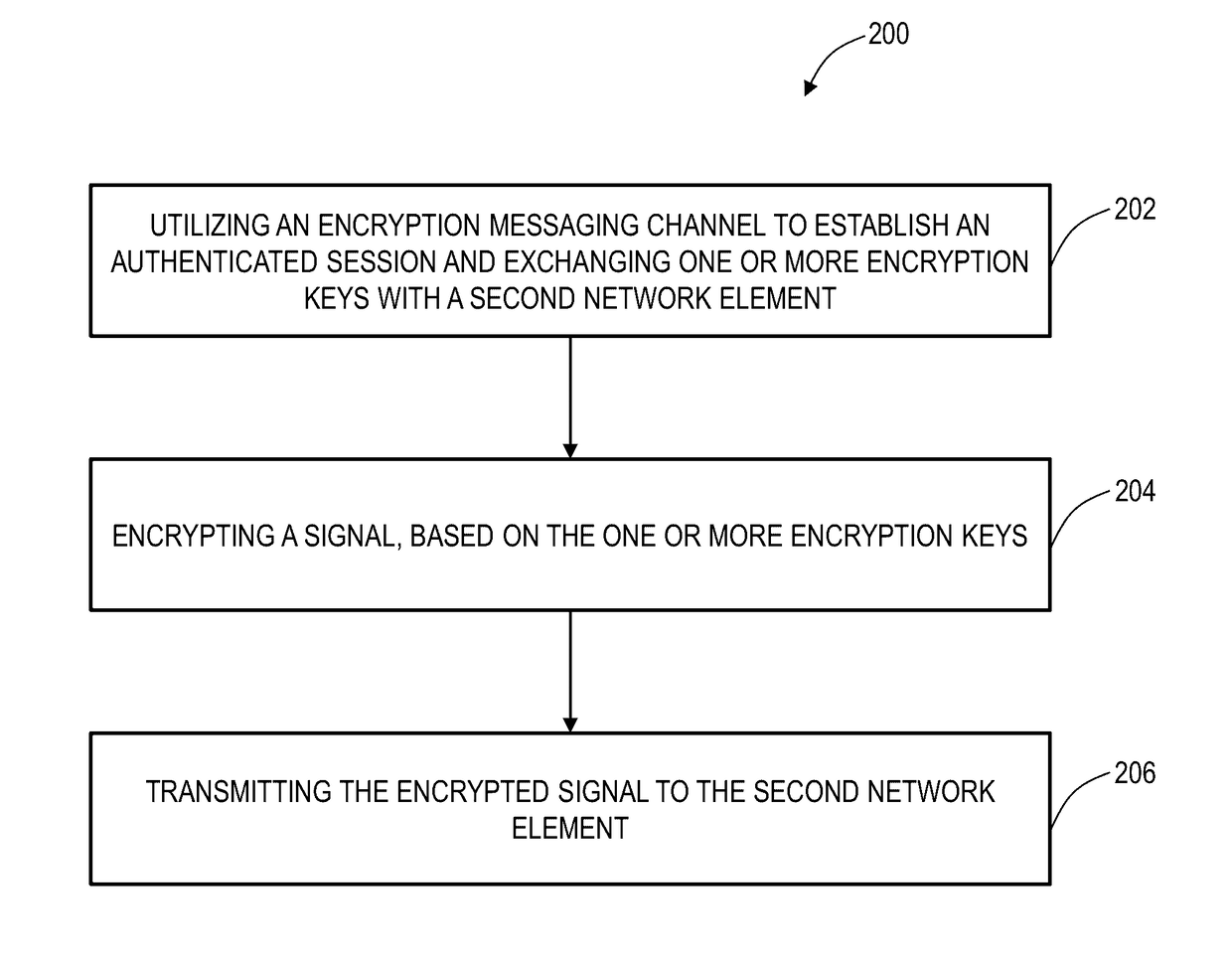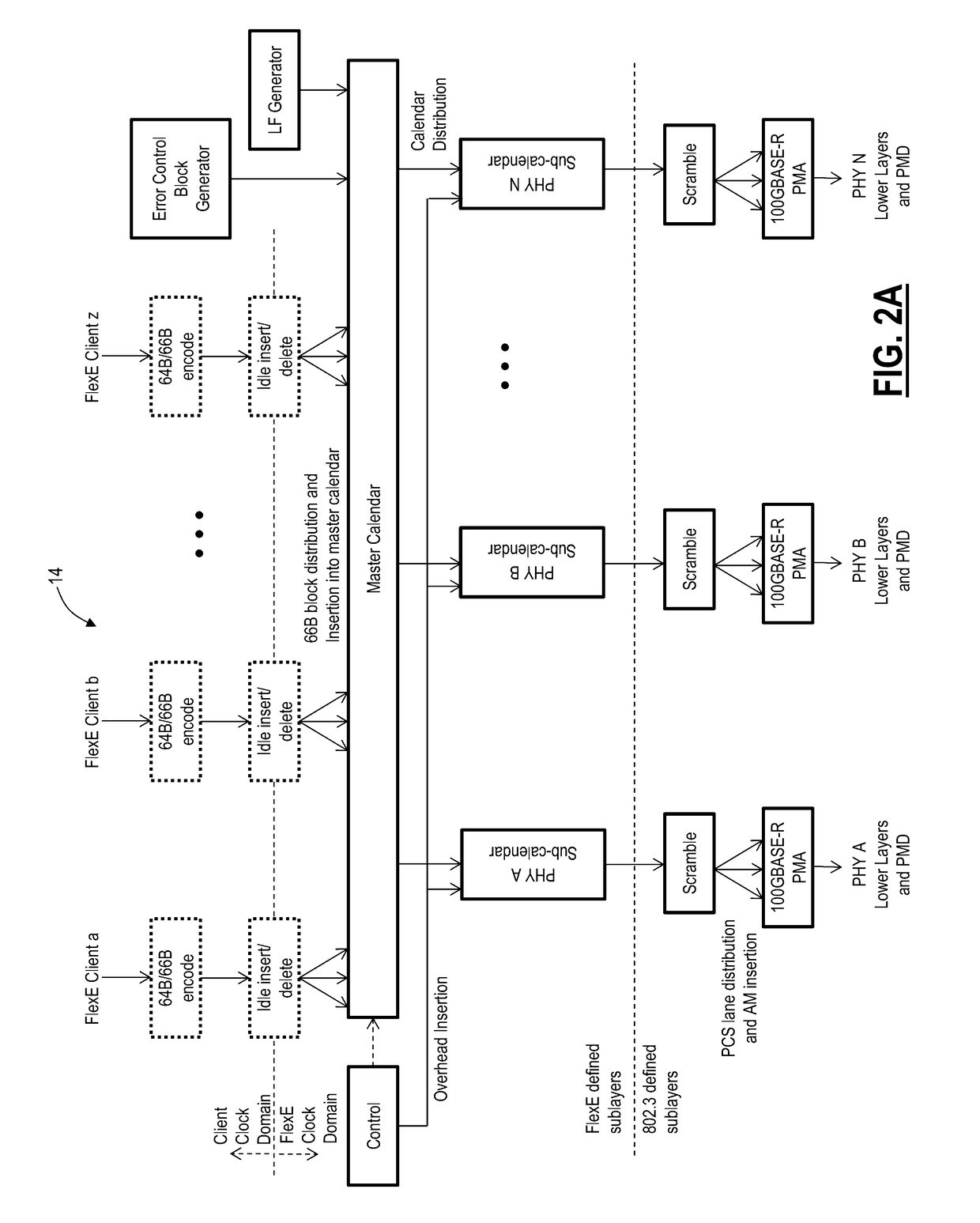Flexible ethernet encryption systems and methods
a technology of ethernet encryption and flexible ethernet, applied in the field of flexible ethernet, can solve the problems of reducing the effective throughput, lagging interoperability, and increasing the size of packets
- Summary
- Abstract
- Description
- Claims
- Application Information
AI Technical Summary
Benefits of technology
Problems solved by technology
Method used
Image
Examples
Embodiment Construction
[0030]Again, in various exemplary embodiments, the present disclosure relates to Flexible Ethernet (also referred to variously as Flex Ethernet or FlexE) bulk encryption systems and methods. The systems and methods apply bulk encryption concepts (Advanced Encryption Standard (AES), Galois / Counter Mode (GCM), etc.) to the FlexE layer and uses FlexE overhead for a messaging channel. The messaging channel provides messaging (key exchange and authentication) and tag (GCM) communications between both ends. The encryption can cover the 64b / 66b bit stream at either the FlexE client layer (i.e., path) or FlexE shim layer (i.e., section / segment). The FlexE client can be mapped into a FlexE shim or can be used on a standard PHY and this encryption method can also be considered as a Physical Coding Sublayer (PCS) based encryption method. FlexE encryption is applied at Layer 1, and does not affect the packet rate and can be used with future FlexE interfaces, without requiring OTN wrapping. It i...
PUM
 Login to View More
Login to View More Abstract
Description
Claims
Application Information
 Login to View More
Login to View More - R&D
- Intellectual Property
- Life Sciences
- Materials
- Tech Scout
- Unparalleled Data Quality
- Higher Quality Content
- 60% Fewer Hallucinations
Browse by: Latest US Patents, China's latest patents, Technical Efficacy Thesaurus, Application Domain, Technology Topic, Popular Technical Reports.
© 2025 PatSnap. All rights reserved.Legal|Privacy policy|Modern Slavery Act Transparency Statement|Sitemap|About US| Contact US: help@patsnap.com



